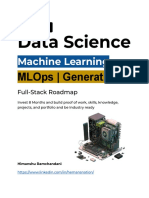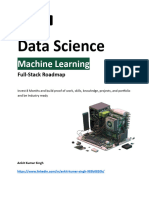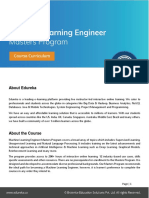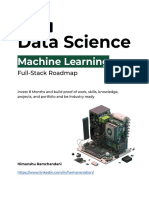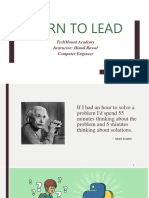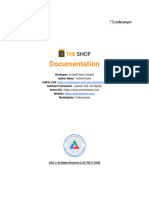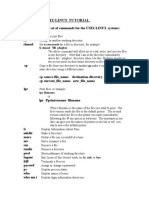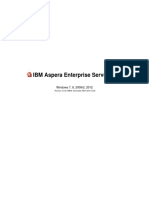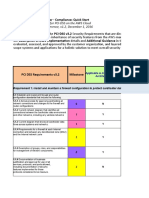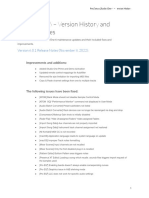0% found this document useful (0 votes)
80 views24 pagesRoadmap For AI ML and Data Engineer
This document outlines a comprehensive roadmap for 12th pass students with no computer background to pursue careers in Artificial Intelligence, Machine Learning, or Data Engineering. It details a phased learning approach starting from foundational programming skills in Python, progressing through intermediate and advanced topics, and culminating in job preparation and project development. Additionally, it provides guidance on essential programming languages and tools, as well as potential career options and salary expectations by 2030.
Uploaded by
paghadardhyeyCopyright
© © All Rights Reserved
We take content rights seriously. If you suspect this is your content, claim it here.
Available Formats
Download as PDF, TXT or read online on Scribd
0% found this document useful (0 votes)
80 views24 pagesRoadmap For AI ML and Data Engineer
This document outlines a comprehensive roadmap for 12th pass students with no computer background to pursue careers in Artificial Intelligence, Machine Learning, or Data Engineering. It details a phased learning approach starting from foundational programming skills in Python, progressing through intermediate and advanced topics, and culminating in job preparation and project development. Additionally, it provides guidance on essential programming languages and tools, as well as potential career options and salary expectations by 2030.
Uploaded by
paghadardhyeyCopyright
© © All Rights Reserved
We take content rights seriously. If you suspect this is your content, claim it here.
Available Formats
Download as PDF, TXT or read online on Scribd
/ 24
